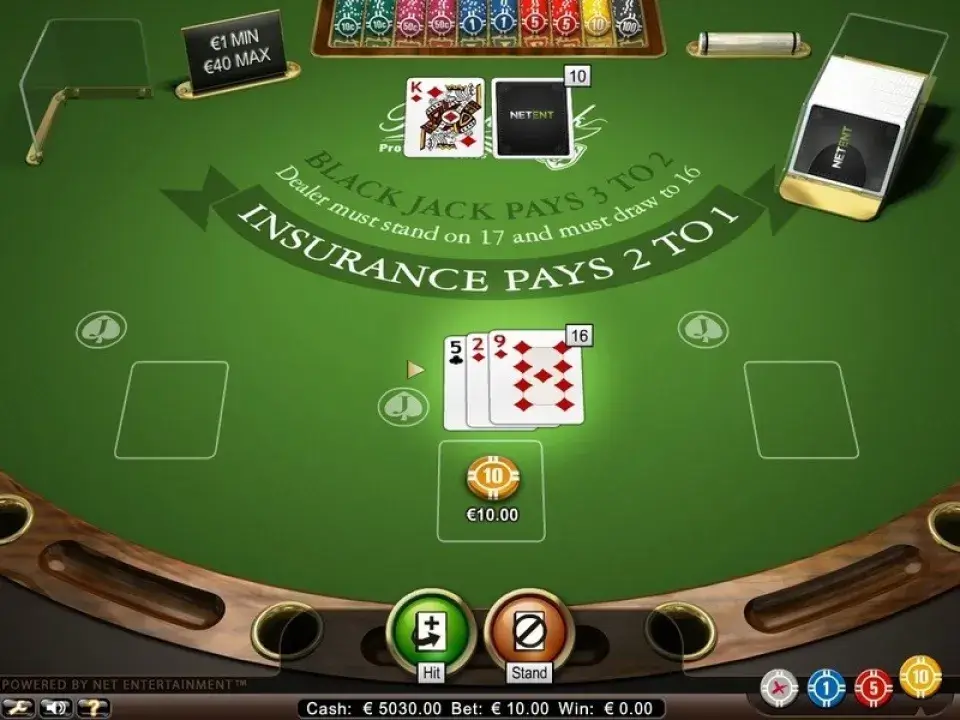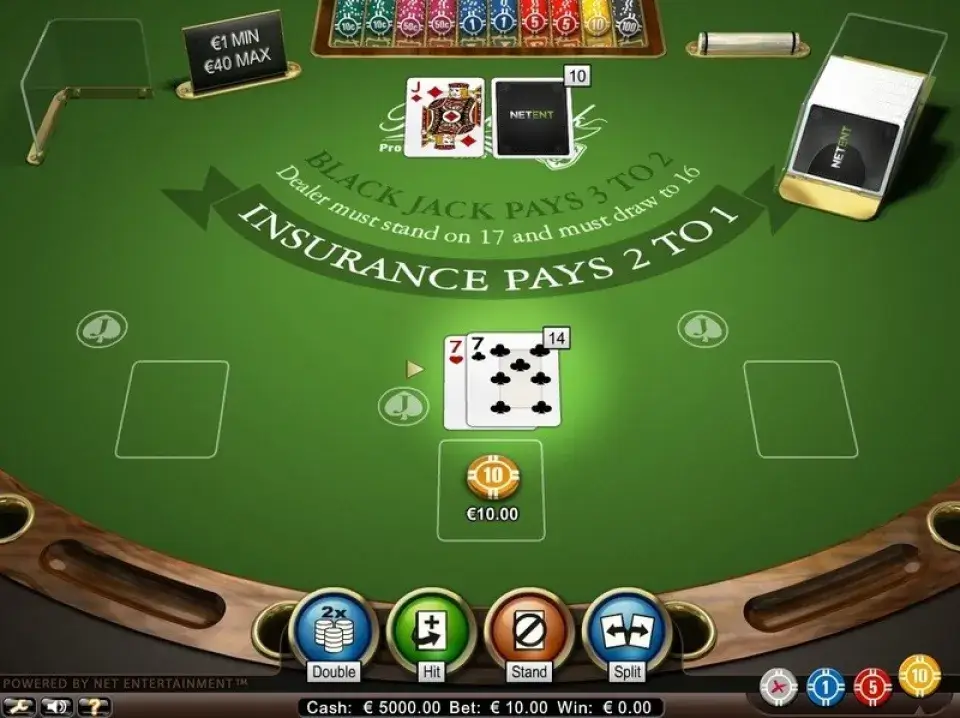With a few good rules of thumb, you can greatly increase your chances of winning at blackjack. In 5 minutes, you’ll learn a simple blackjack strategy that will help you play better than 90 percent of players.
Blackjack can be intimidating, especially for a beginner. But there’s a simple blackjack strategy that consists of just 5 rules of thumb. You’ll have these memorized in no time, so you’ll be well-prepared at the blackjack table.
Some of these rules may go against your instincts. However, they have been thoroughly mathematically calculated. If you were to play millions of blackjack hands using this strategy, the casino’s house edge would be only 0.7 percent.
The Basics: Does the Dealer Have a Low or High Card?
A crucial factor in a good blackjack strategy is the dealer’s first drawn card, the ‘dealer card’.
For each dealer card, you can precisely calculate the chances of the dealer busting:
If the dealer has an Ace or a ten (or picture card), that’s unfavorable for the players. The chance of the dealer busting is small. It’s much more likely that the dealer will end up with a high number of points or even a blackjack.
If the dealer has a low card (2 through 6), that’s favorable for the players. In that case, the dealer has a relatively high chance of busting.
The five simple rules of thumb are based on this principle.
1) When Do You Stand?
- Dealer 2 through 6: Stand on 12 or more
- Dealer 7 through Ace: Stand on 17 or more
Note: If you have an Ace in your hand that you can count as 1 or 11 (a ‘soft’ hand), refer to rule 2.

2) When Do You Stand with an Ace?
If you have an Ace in your hand that you can count as 1 or 11 (a ‘soft’ hand), you stand a bit less often:
- Dealer 2 through 6: Stand on 18 or more
- Dealer 7 through Ace: Stand on 19 or more
Why is this blackjack strategy the right one? An example:
You have an Ace and a 7, so 8 or 18 points. Normally, you would always stand on 18 points. But with Ace-7, you can hit without risking going bust.
If you get a 10, you’ll be back at 18 and stand. If you get a small card (Ace, 2, 3), you’ve improved your hand and thus have a better chance of winning. The chance of getting a 10 or a small card is quite high: 54 percent combined.

If you get a middling card (4-9), it’s not a big deal. You then continue playing according to the first rule of thumb.
3) When Do You Double Down?
- With 9 points: If the dealer has 2 through 6
- With 10 or 11 points: If the dealer has 2 through 9
This blackjack strategy applies at Canadian casinos and most other European casinos.
In online casinos (and in casinos in the US and Macau), you’re usually allowed to double down regardless of your point total. In that case, you also double down in the following situations:
- Ace-5, Ace-6, or Ace-7: Double down if the dealer has 2 through 6

4) When Do You Split?
- 4-4, 5-5, 10-10: Never split
- 8-8, Ace-Ace: Always split
- 2-2, 3-3, 6-6, 7-7, 9-9: Only split if the dealer has 2 through 6

5) Never Take Insurance or Even Money
This is the easiest rule of thumb.
Taking insurance is never a good choice. Not even if you have 19 or 20 points – your own hand doesn’t matter.
You also never take even money when you have a blackjack and the dealer has an Ace.
Why not?
Of the 13 possible cards the dealer can get with the Ace, four are worth 10 points: King, Queen, Jack, and 10. So the chance of the dealer getting blackjack is 4/13, or 30.8 percent.
Let’s say you originally bet $10. The insurance costs $5. If the dealer has blackjack, the insurance pays out $15 (2 to 1).
The expected value of the insurance is then:
$15.00 x 0.308 = $4.62.
On average, you’ll lose every time you take the insurance:
$5.00 – $4.62 = $0.38.

Not a good blackjack strategy, then.
Need a Cheat Sheet? That’s Allowed!
That’s it, it’s that simple. Anyone can memorize these 5 rules, and if necessary, you can write them down on a cheat sheet for the first time you play. You’re allowed to use a cheat sheet at blackjack – even at Canadian Casino.
If you play using this blackjack strategy, you certainly won’t make any blunders at the table, at Canadian Casinos, or elsewhere.
Want to Learn More?
As mentioned, the casino’s house edge is only 0.7 percent if you apply the above rules of thumb. With blackjack, your chances of winning are now better than at any other game in the casino.
But: this simplified strategy is not 100 percent perfect. If you’re willing to invest more time and practice a lot, you can do even better.
